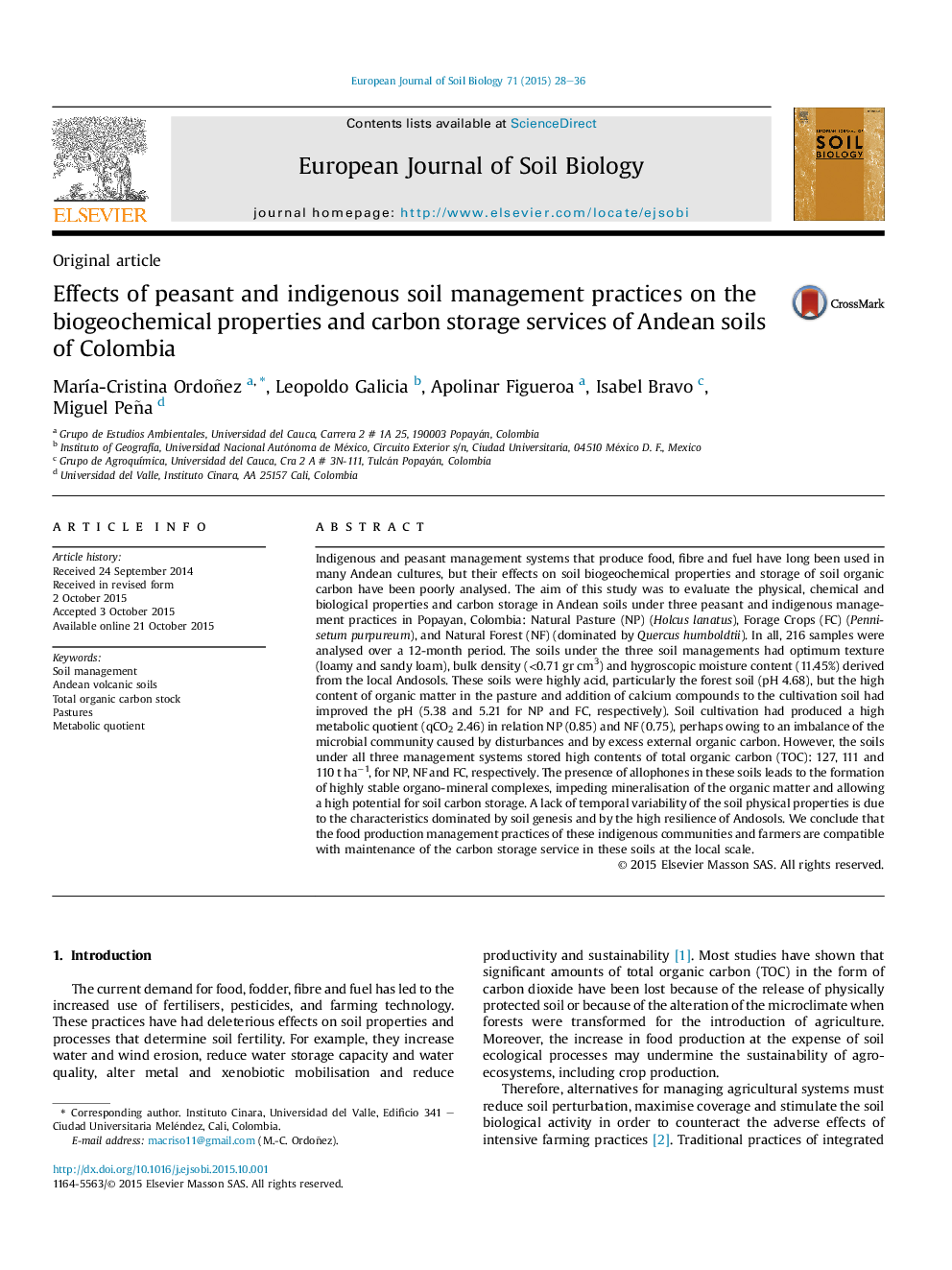| کد مقاله | کد نشریه | سال انتشار | مقاله انگلیسی | نسخه تمام متن |
|---|---|---|---|---|
| 4391686 | 1618121 | 2015 | 9 صفحه PDF | دانلود رایگان |
• Volcanic soils exposed to various management practices had good soil fertility and biogeochemical properties.
• Influence of soil management practices was reflected in the metabolic ratio.
• Natural pasture soils had higher TOC storage per hectare than forage crops soil and natural forest soil.
Indigenous and peasant management systems that produce food, fibre and fuel have long been used in many Andean cultures, but their effects on soil biogeochemical properties and storage of soil organic carbon have been poorly analysed. The aim of this study was to evaluate the physical, chemical and biological properties and carbon storage in Andean soils under three peasant and indigenous management practices in Popayan, Colombia: Natural Pasture (NP) (Holcus lanatus), Forage Crops (FC) (Pennisetum purpureum), and Natural Forest (NF) (dominated by Quercus humboldtii). In all, 216 samples were analysed over a 12-month period. The soils under the three soil managements had optimum texture (loamy and sandy loam), bulk density (<0.71 gr cm3) and hygroscopic moisture content (11.45%) derived from the local Andosols. These soils were highly acid, particularly the forest soil (pH 4.68), but the high content of organic matter in the pasture and addition of calcium compounds to the cultivation soil had improved the pH (5.38 and 5.21 for NP and FC, respectively). Soil cultivation had produced a high metabolic quotient (qCO2 2.46) in relation NP (0.85) and NF (0.75), perhaps owing to an imbalance of the microbial community caused by disturbances and by excess external organic carbon. However, the soils under all three management systems stored high contents of total organic carbon (TOC): 127, 111 and 110 t ha−1, for NP, NF and FC, respectively. The presence of allophones in these soils leads to the formation of highly stable organo-mineral complexes, impeding mineralisation of the organic matter and allowing a high potential for soil carbon storage. A lack of temporal variability of the soil physical properties is due to the characteristics dominated by soil genesis and by the high resilience of Andosols. We conclude that the food production management practices of these indigenous communities and farmers are compatible with maintenance of the carbon storage service in these soils at the local scale.
Journal: European Journal of Soil Biology - Volume 71, November–December 2015, Pages 28–36
